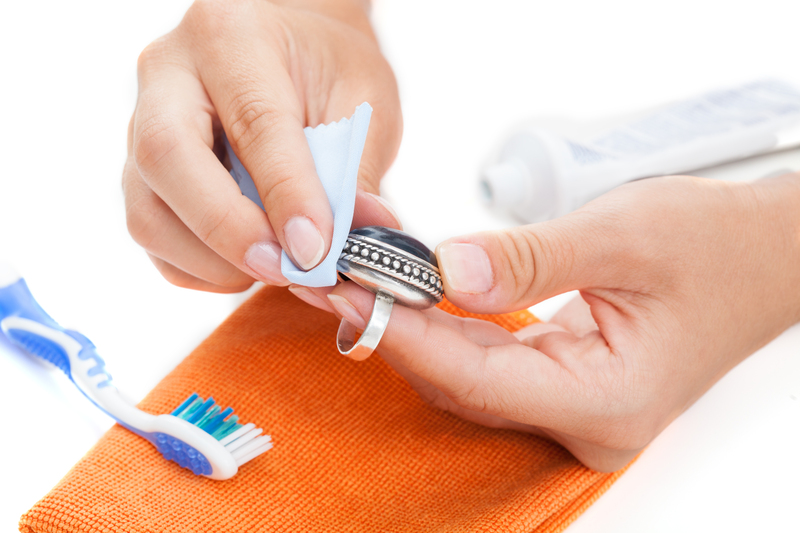Sofa Cover Preservation: The Ultimate Washing Guide
Posted on 01/10/2025
Sofa Cover Preservation: The Ultimate Washing Guide
The sofa is the heart of the living room, a place where you relax, entertain guests, and create countless memories. Over time, your beloved sofa covers can collect dust, stains, pet hair, and other undesirables. To keep them looking fresh and extend their lifespan, proper maintenance, especially washing, is essential. In this comprehensive guide, we'll walk you through the best practices for preserving your sofa covers and provide expert advice for ultimate care.

Why Preserve Your Sofa Covers?
Sofa covers act as the first line of defense against spills, dust, and stains. Preserving your sofa covers not only keeps them attractive and hygienic but also protects your actual sofa, often a significant investment. Here's why regular washing and care matters:
- Hygiene: Regular cleaning eliminates bacteria, allergens, and odors.
- Appearance: Maintains a fresh, appealing look.
- Longevity: Prevents premature wear, fading, and fabric degradation.
- Cost-effective: Avoids expensive professional cleaning or having to buy new covers too soon.
Understanding Sofa Cover Materials
Not all sofa covers are created the same. Different materials require different care methods. Before you start, identify your sofa cover's fabric type to determine the best washing approach.
- Cotton: Durable, breathable, often machine-washable. Prone to shrinking if washed improperly.
- Polyester: Stain-resistant, easy to clean, retains color well.
- Velvet: Luxurious, delicate, usually requires a gentle touch or dry cleaning.
- Leather & Faux Leather: Must be spot cleaned; avoid machine washing.
- Linen: Elegant, natural, may wrinkle easily and often needs gentle hand-washing.
- Microfiber: Highly stain-resistant, often machine washable.
Check the care label! Always consult the manufacturer's instructions before cleaning your sofa covers.
Before You Wash: Essential Preparation
1. Inspect the Care Label
Locate the care tag on your sofa slipcover. Look for symbols or written instructions regarding water temperature, wash cycles, and whether machine or hand washing is recommended.
2. Pre-Treat Stains
Use a fabric-appropriate stain remover or a solution of mild detergent and water to spot-treat visible stains. Blot--never rub--to lift the stain without spreading it.
3. Vacuum and Shake Off Debris
Thoroughly vacuum your cover to remove dust, crumbs, and pet hair. For removable styles, shaking them outdoors helps remove deeper particles.
Hand Washing Vs. Machine Washing Sofa Covers
Hand Washing Tips
- Fill a large basin or tub with cold or lukewarm water.
- Add a small amount of gentle, color-safe detergent.
- Submerge the cover and gently agitate the water with your hands.
- For tough stains, gently rub with a soft cloth or sponge.
- Rinse thoroughly in cool, clean water.
- Press (don't wring!) the water out by pressing the cover between towels.
Machine Washing Standards
- Wash separately to prevent dye transfer.
- Use a gentle cycle and cold water to protect fabrics.
- Zip or button covers before washing to prevent snagging.
- Avoid bleach or strong detergents that can degrade fabrics and colors.
- Use a mesh laundry bag for delicate fabrics.
- Double rinse if your detergent tends to leave residue.
Note: Oversized covers may be too big for regular home machines. In that case, use a laundromat's industrial washers.
Drying and Reinstalling Sofa Covers
Air-drying Is Best
Most sofa slipcovers last longer if air-dried. Tumble dryers can cause shrinkage and damage delicate materials.
- Lay covers flat on a clean towel or hang them on a wide drying rack.
- Keep away from direct sunlight to reduce fading and prevent drying out natural fibers.
- Reshape the covers while damp to avoid wrinkles and maintain the perfect fit.
Ironing and Re-Fitting
- If wrinkles form, iron on a low setting if the care label allows, using a protective cloth over the fabric.
- Reinstall the covers when slightly damp for a snug, smooth fit.
Spot Cleaning and Stain Removal for Sofa Cover Protection
Quick Response Is Key
Accidents happen! Act fast to stop stains from setting. Here is a quick process for spot cleaning to help with sofa cover preservation:
- Blot spills immediately with a clean cloth--don't rub!
- Use a mild detergent mixed with cool water for water-based stains.
- For oil-based stains, sprinkle a bit of baking soda, let sit, and vacuum.
- Test any cleaner on an inconspicuous spot before broader application.
Common Stains and Solutions:
- Coffee/Tea: Mix 1 tablespoon of dish soap, 2 cups cool water, dab until lifted.
- Red Wine: Blot, then sprinkle salt, rinse with cold water and treat with hydrogen peroxide (test first).
- Ink: Dab with rubbing alcohol or specialized ink remover.
- Pet Accidents: Use enzyme cleaners made for upholstery.
Advanced Sofa Cover Maintenance Tips
Use Protective Sprays
Invest in a fabric protector spray specifically designed for upholstery. These sprays help repel liquids and prevent stains from penetrating the fibers, giving your sofa covers extra defense between washes.
Practice Preventative Care
- Rotate and flip cushions regularly for even wear.
- Encourage family and guests to avoid eating or drinking heavily colored beverages on the couch.
- Keep pets groomed to minimize shedding and potential stains.
- Vacuum covers weekly to remove dust and debris before it settles deep into the fabric.
When to Seek Professional Cleaning
Some stains or delicate fabrics may require expert attention. Consider professional cleaning for:
- Heavily soiled covers that regular washing doesn't restore.
- Antique, velvet, suede, or delicate silk sofa covers.
- Large covers that can't fit in a standard washing machine.
Common Mistakes to Avoid When Washing Sofa Covers
Proper sofa cover protection means knowing what not to do. Here are pitfalls to steer clear of:
- Neglecting the care label instructions. Never guess - always check first.
- Overloading the washing machine. Too much weight can result in uneven cleaning or damage to both the cover and your appliance.
- Incorrect water temperature. Hot water may shrink fabrics or fade colors.
- Using harsh chemicals. Bleach and rough detergents weaken fibers and reduce color vibrancy.
- Rough tumble drying. This can shrink or warp your cover, sometimes irreversibly.
- Skipping pre-treatment. Treat stains before washing--otherwise, heat can set them permanently.
- Not drying thoroughly. Putting a damp cover on your sofa encourages mildew and a musty smell.
How Often Should You Wash Your Sofa Covers?
The frequency depends on your household's activity. For optimal upholstery cover preservation, follow these general guidelines:
- With pets or young children: Every 1-2 months
- Normal usage: Every 3-4 months
- Light usage/guest rooms: Every 6-12 months
- Spot clean as needed between full washes.
Stick to a washing routine to avoid deep-set stains and odors that become difficult to remove over time.
Top Products & Tools for Effective Sofa Cover Cleaning
- Upholstery-safe detergents - These gentle formulas clean without harshness.
- Fabric protector sprays - Help repel liquids between washes.
- Enzyme-based cleaners - Excellent for organic stains like food and pet messes.
- Soft-bristle brushes or sponges - For gentle stain removal.
- Vacuum cleaner with upholstery attachment - Removes dust and debris effectively.
- Mesh laundry bags - Protects covers during machine washing.
Investing in the right products ensures thorough sofa slipcover preservation and simplifies your cleaning routine.

FAQs About Sofa Cover Preservation and Washing
Can I Machine Wash All Types of Sofa Covers?
Not all sofa covers are safe for machine washing. Delicate fabrics like velvet, silk, or some specialty weaves may require hand washing or professional cleaning. Always refer to the care tag.
What's the Best Way to Dry Sofa Covers?
Air drying is safest. Avoid direct sunlight and lay covers flat or drape over a broad line. Use low heat in the dryer only when specified by the manufacturer.
How Do I Prevent Shrinking?
Use cold water, gentle cycles, and air drying. Avoid high dryer heat.
Is Professional Cleaning Worth It?
For delicate, antique, or extremely stained covers, professional cleaning ensures deep cleaning while protecting the fabric.
Conclusion: Keep Your Sofa Covers Looking New
The secret to a beautiful, fresh-smelling living space lies in regular sofa cover care. With a consistent cleaning routine, a watchful eye for stains, and respect for your fabric's specific needs, you can preserve the look and functionality of your covers for years. Use these tried-and-true washing guidelines to enjoy a healthier home and extend the life of your furniture's most visible layer.
Remember: Preserved sofa covers not only enhance your decor but also save you time and money in the long run. Start your ultimate washing routine today and let your living room shine!




